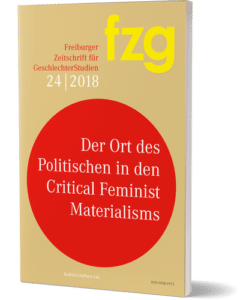Trans* Vocality: lived experience, singing bodies, and joyful politics
Holly Patch, Tomke König
To sing is an expression of your being, a being which is becoming. – Maria Callas
from an agential realist perspective, politics concerns what becomes materialized, what bodies come to emerge. This understanding of politics is aligned with a form of poststructuralist politics that, rather than seeking to represent subjects, investigates the power relations that constitute the subject, displacing the question of politics from the power relations between subjects to the power relations that go into the subject’s constitution (2016: 66).
[i]n addition to focusing on the way power constitutes and is reproduced by bodies, phenomenological studies emphasize the active, self-transformative, practical aspects of corporeality as it participates in relationships of power. (Coole/Frost 2010: 19)
sets our vocal cords in oscillation, generating sounds through their vibrations. The voice relies on elementary motor activity of the body; there is an underlying interplay between the ‘immateriality’ of the breath, the resonating cavernous organs, and the flexible resistance of the vocal cords. (Krämer 2003: 67, translated by the authors from German).
this narrative also misses many people’s felt sense of inchoate gender expression. And the ease with which these narratives emerge may mask the work it has taken to construct them as ready to hand in narrating always messy lives. Lived gender is often not so simple, nor so binary, as the current gender model claims. (2011: 139)3
1 The term ‘vocality’ has been used by other authors in different ways. For example, for Leslie C. Dunn and Nancy A. Jones (1994) “to move from ‘voice’ to ‘vocality,’ then, implies a shift from a concern with the phenomenological roots of voice to a conception of vocality as a cultural construct,” and they use the term “in order to stress that voices inhabit an intersubjective acoustic space” (2). Linda Fisher argues that distinguishing between ‘voice’ and ‘vocality’ to put a focus on the performative element has resulted in the loss of the “living bodily voice” (2010: 88) conceptually. Fisher’s phenomenological take on voice and vocality does not “dispute that the voice, like the body generally, is culturally, discursively, and politically mediated and produced”, but she “want[s] to emphasize the material irreducibility of lived embodiment, the phenomenal, carnal materiality and physicality that
is experienced immanently and viscerally” (88). Vocality, in our use, like Fisher, picks up on the processual while not dismissing corporeality. Alexandros N. Constansis (2013) introduces the terms “transvocality,” “cisgender vocality,” “hybrid vocality,” and “non-binarian vocality” in his musicological case study on the Female-toMale (FTM) singing voice. Drawing from gender and queer theory, in a footnote he explicates that “unlike other musicological definitions, the terms ‘hybrid vocality’ and ‘hybrid vocal personae’ tend to focus on the effects of non-binarian, i. e., non-strictly ‘male’ or ‘female’, endocrinological and gender formation in singing vocality” (Constansis 2013: 22).
2 Fisher reminds us that “[f]rom a phenomenological point of view, the material is what is always already there, perhaps concealed or forgotten, but always present and dynamic” (2010: 94).
3 The term ‘felt sense’ was first introduced by Eugene Gendlin to describe “the layer of the unconscious that is likely to come up next. This is at first sensed somatically, not yet known or opened, not yet in the ‘preconscious’ ” in Gendlin (1996:19). Jäger and König (2017) draw upon Gendlin’s concept of felt sense in designing experiential interviews for gender research. Observing at this level offers up the chance to bring into view contradictions, breaks and changes within the gender order, to discover something new.
4 “The body is, instead, ‘a nexus of living meanings,’ gaining these meanings through proprioception, the primary but unlocatable ‘felt sense’ that allows a body to be experienced as a coherent whole rather than a collection of disparate parts. The implications of these ideas for thinking transgenderism are quite promising, and several trans writers have described this disarticulation between felt and observed gender in language that is deeply resonant with phenomenological accounts of embodiment” (Salamon 2010: 4). In his book “Phenomenal Gender: What Transgender Experience Discloses,” Ephraim Das Janssen makes the case that “a Heideggerian, applied phenomenological account of gender focuses attention where it is needed: lived experience […] to get at the heart of what gender is for all by examining those for whom gender just does not work out according to expectations” (2017: 5, emphasis in original).
* * *
 Sie möchten gerne weiterlesen? Dieser Beitrag ist in dem Heft 1/2018 von FZG – Freiburger Zeitschrift für GeschlechterStudien erschienen.
Sie möchten gerne weiterlesen? Dieser Beitrag ist in dem Heft 1/2018 von FZG – Freiburger Zeitschrift für GeschlechterStudien erschienen.
